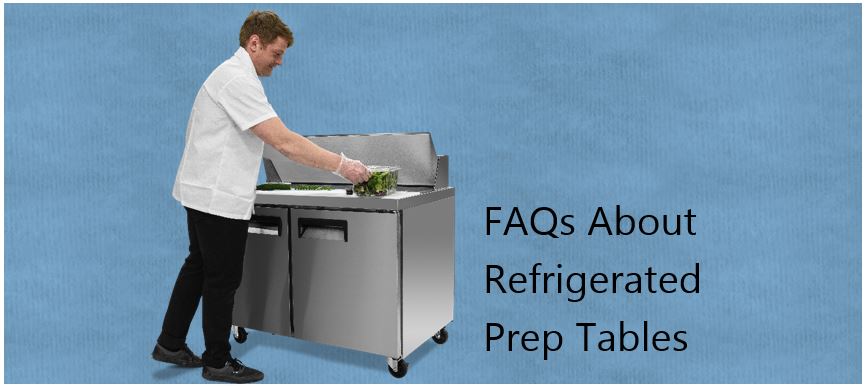What should I consider when shopping for a food prep table?
The most important consideration is your menu and the types of foods you are preparing. A refrigerated food prep table can save a great deal of time when you prepare made to order menu items like sandwiches, salads, or pizza. The benefit of a refrigerated prep table or worktop refrigerator is that you prepare the individual ingredients ahead of time and have them all at hand when preparing dishes. Using a prep table can reduce labor and improve productivity by placing all the ingredients in a single place, along with back-up ingredients that are stored in the cold cabinet. It is an extremely efficient method of operation. You need to be making a wide variety of menu items from a fixed list of ingredients that you can store in the prep table for this to be a good solution for your kitchen.
What is the difference between a pizza table and a sandwich table?
Pizza tables are best suited for making pizza because they have a deeper work surface to accommodate pizzas. These are usually 20” in depth. Additionally, a pizza table often will have a raised rail above the prep area. The raised, angled rail makes it easier for the pizza cook to reach different ingredients without having to stretch or move from place to place. This speeds up the assembly process for quicker output. Sandwich or sandwich / salad prep tables usually have a narrower work surface of 10” to 12” deep. The additional depth is not required for assembling sandwiches or salads.
How do I determine how much pan capacity is best?
A review of your menu will help you to determine the best pan capacity for your operation. You also need to look at the amount of space you have available in your kitchen. The smallest prep table size is 27” wide and these will hold (6) sixth size pans. Most refrigerated prep tables are designed to hold standard sized food pans with sixth size being the most common and your prep table will include the pans when you purchase it. The dividers between the pans are usually adjustable so that you can change out to a different pan size if your usage of a specific ingredient is heavier than other ingredients.
What is the difference between cold wall or forced-air cooling?
A cold wall system uses a cold-wall evaporator where tubes are installed directly into interior walls of the unit so that the cooling is spread evenly throughout the walls of the unit. A cold wall cooling system is well suited for pizza tables because it is good at keeping heavier, dense ingredients like cheese, meats and sauce, cooled to temperature safe levels. It is also most common in raised rail systems. Forced air systems blow cooled air over the tops of the food pans to keep them cold. You will find this type of system on salad and sandwich prep tables as they are usually holding vegetables and other ingredients that may dry out when left sitting too long.
What do I need to know about exhaust and intake?
Like most pieces of commercial restaurant equipment, refrigerated prep tables need space for air to come in and go out to ensure the units can stay cool even when running for long periods of time. The location of the intake and exhaust will be different from model to model, even within the same brand. It is important to know where you will be placing your prep table in the kitchen to know where you need your intake and exhaust to be placed. While it is common to have these located at the back of a unit, if the table will be in a tight spot or placed against a wall where any airflow would be blocked, it is best to have the intake and exhaust located at the front of the unit.
Cook’s offers refrigerated prep tables from several manufacturers including FSE, True and Norlake. We can assist you in determining the best refrigerated prep table for your foodservice operation.
